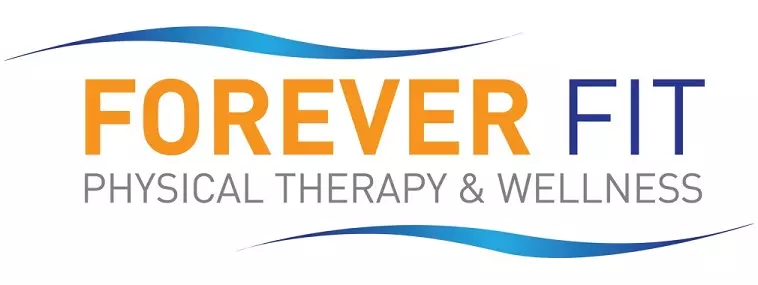Biceps release surgery is also known as biceps tenodesis or tenotomy. It’s performed to help address issues that are related to the long head of the biceps tendon, located in the shoulder.
- Biceps tenotomy — In a tenotomy, the biceps tendon is cut or released from the shoulder joint. Cutting the tendon can help alleviate pain from biceps tendinitis or a torn tendon. After surgery, the remaining part of the tendon retracts and the body learns to compensate for the loss.
- Biceps tenodesis — In a tenodesis, the biceps tendon is not completely cut. It is reattached to another location within the shoulder joint. A more cosmetic approach compared to a tenotomy, a biceps tenodesis can help provide some degree of biceps function.
Biceps release surgery is considered for people who experience persistent and debilitating pain, weakness, or movement limitations in the shoulder due to certain medical conditions. Surgery is a last resort after more conservative treatments have failed. Biceps release surgery has a 70% success rate.
Tips to follow after biceps release surgery
There is no shortcut to recovery after surgery. Your body needs adequate time to heal and recover. However, these tips can make your recovery go more smoothly:
- Follow medical advice — It’s crucial to follow any postoperative instructions provided to you by your surgeon. This can include taking prescribed medications, wound care management, and using braces or slings as recommended. Following medical advice closely sets the foundation for your successful recovery. Be sure to communicate with your medical team if you have any concerns or changes in your symptoms. They can adjust your treatment plan as needed.
- Manage pain and swelling — You can expect some pain and swelling after surgery. Use cold therapy and any prescribed pain medications to help manage these symptoms. Elevating your arm can also help reduce swelling. If you begin to experience unusual or severe pain, seek medical attention immediately.
- Rest and sleep — Proper rest and quality sleep are crucial for your body’s healing process. You can use pillows to help support your shoulder and find a comfortable position to sleep in so it doesn’t strain your shoulder.
- Nutrition and hydration — Keeping your body adequately fueled and hydrated is key to your recovery. Fuel and hydration help with tissue recovery and your overall well-being.
- Physical therapy — As your shoulder heals, you may be recommended to seek physical therapy. It’s essential to attend your physical therapy sessions as recommended. A physical therapist can help guide you through exercises and techniques that are tailored to your specific recovery and rehabilitation needs. This guidance can help ensure a safe and effective recovery process.
- Patience and persistence — Recovery takes time. Don’t push yourself too hard. Be patient and persistent with your physical therapy sessions.
Every person’s recovery is unique. It’s important to follow medical advice and stay committed to your recovery plan.
Physical therapy for biceps release surgery recovery
Physical therapy plays an important role in biceps release surgery recovery. It aims to help reduce your pain, restore your mobility and improve the overall function of your shoulder. During your first visit to a physical therapy clinic, your physical therapist will conduct an initial assessment to evaluate your range of motion, strength and functional limitations of your shoulder. This assessment will help your physical therapist design a tailored treatment plan for your specific recovery needs. Common physical therapy treatments and techniques used can include:
- Therapeutic exercises — Therapeutic exercises can include range-of-motion and strengthening exercises. Range-of-motion exercises are intended to help prevent stiffness and improve your mobility. These exercises gradually progress as your shoulder heals. Strengthening exercises are intended to target the muscles surrounding your shoulder joint. They focus on improving the stability of your shoulder, improving the strength of the shoulder muscles, and helping to ensure proper shoulder function.
- Manual therapy — Physical therapists often use manual therapy techniques. These hands-on techniques can include soft tissue mobilization and joint mobilization. Soft tissue mobilization is used to help manipulate the soft tissue in the shoulder and surrounding areas. It can help reduce muscle tightness and improve shoulder flexibility. Joint mobilization can help move the shoulder joint through its range of motion to help restore normal joint movement and decrease stiffness.
- Graston Technique® — The Graston Technique is a specialized form of manual therapy that can help with bands of scar tissue, called adhesions. Certified physical therapists use specially designed stainless steel instruments to locate scar tissue and help break it down. Scar tissue can cause discomfort and limit movement at the surgical site. The breakdown of these adhesions can help restore the normal range of motion in the shoulder and arm.
- Neuromuscular reeducation — Your physical therapist may use exercises that focus on improving your body awareness and retraining your muscles to work together effectively. These exercises can help enhance your coordination, balance and functional movements. This can be done with Total Motion Release® therapy.
- Modalities — Therapeutic modalities such as ultrasound, cold laser therapy or electrical stimulation may be used in conjunction with other treatment approaches to help boost the effects of treatment. These modalities can also help in the healing process, reduce pain and reduce inflammation.
Incorporating these recovery tips and ensuring that you go to your prescribed physical therapy sessions can improve the outcomes after your biceps release surgery. By following your surgeon’s and physical therapist’s guidance, you can work to regain your shoulder function, learn how to prevent future injuries, and build a strong and healthy shoulder. These steps are essential to a successful recovery journey.
Trust your biceps release surgery recovery to Forever Fit Physical Therapy & Wellness
At Forever Fit Physical Therapy & Wellness, your biceps release surgery recovery journey will be approached with the utmost care and expertise. Our dedicated team of licensed physical therapists understands the challenges you can face during surgery recovery and is committed to helping guide you through your rehabilitation.
Contact our team today for more information or to schedule an initial appointment.

